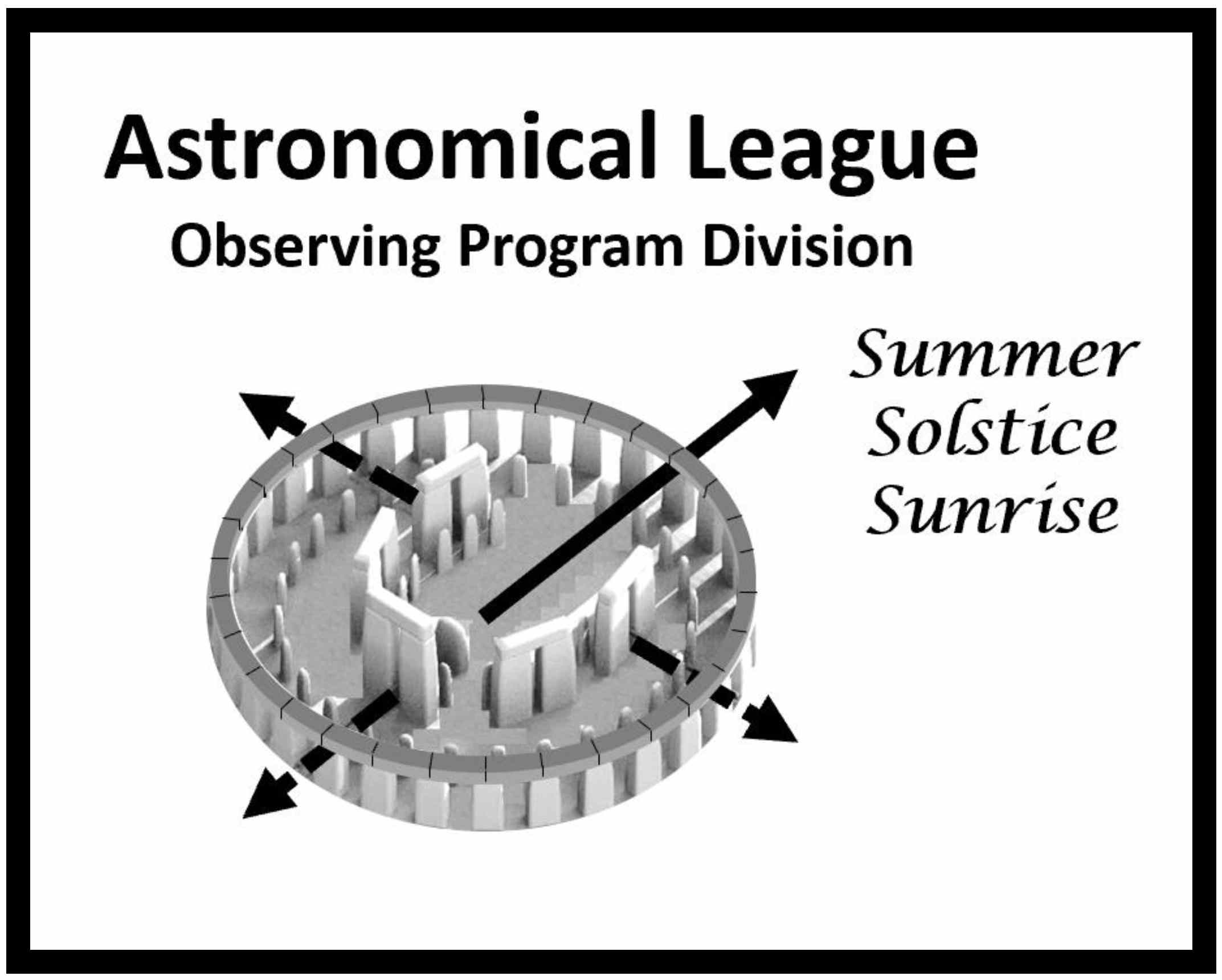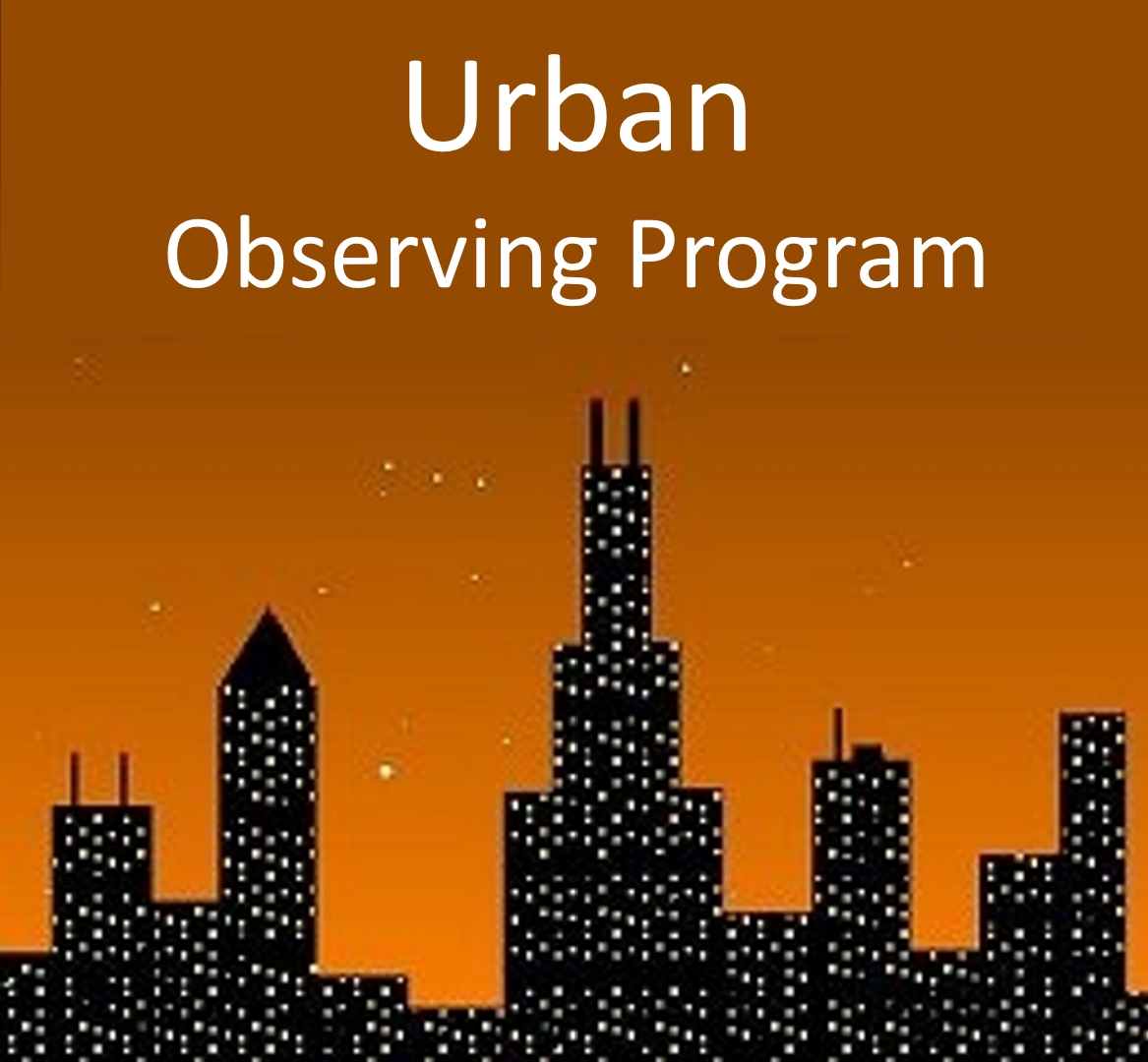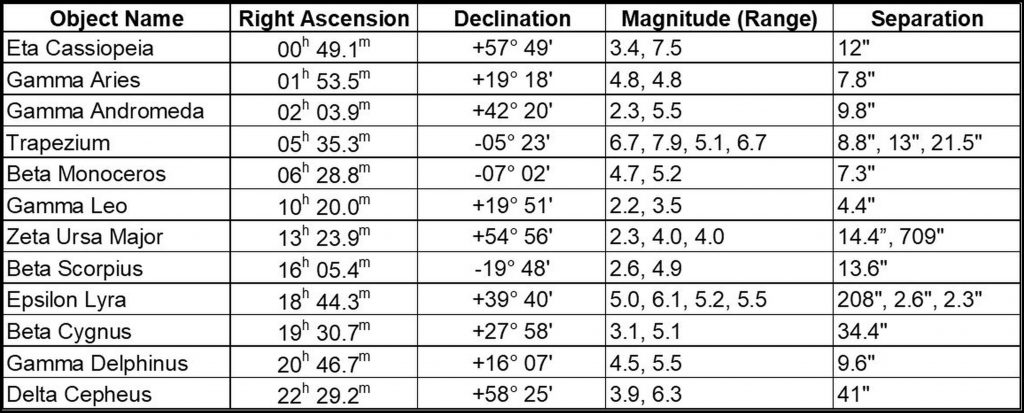Urban Observing Program Coordinator:Aaron Clevenson |
  |
The Urban Observing Program – Double Stars

| Object Name | Right Ascension | Declination | Magnitude (Range) | Separation |
| Beta Perseus (Algol) | 03h 08.2m | +40° 57′ | 2.1-3.4 | Variable (2.9 days) |
- Determine the dates and times of upcoming Algol minima.
- Observe naked-eye and estimate the star’s brightness during a minimum by comparing it to nearby stars.
- Repeat the observation and estimate Algol’s brightness on any non-minima night.
Sky & Telescope Magazine’s Minima of Algol column can be found in each monthly issue. Locate “Celestial Calendar” in the “Observing” section of each issue’s “Table of Contents”. While the Minima predictions are generally not listed in the Table of Contents, they are usually located just a page or two from the first “Celestial Calendar” page.
You can also find them on the Sky & Telescope Website. https://skyandtelescope.org/observing/the-minima-of-algol/
Page down about ½ way until you see the “Initialize to Today” button. Click it and quickly see the appropriate results.
A finder chart can be printed here:
http://www.aavso.org/sites/default/files/finder_charts/PER.GIF
Use any convenient star chart or planetarium program to determine the magnitudes of neighboring stars, or use:
α Persei 1.8 (alpha Persei)
ζ Persei 2.8 (zeta Persei)
ο Persei 3.8 (omicron Persei)
More information about variable star observing can be found at: http://test.astroleague.org/al/obsclubs/variablestar/VSOIntroduction.html



